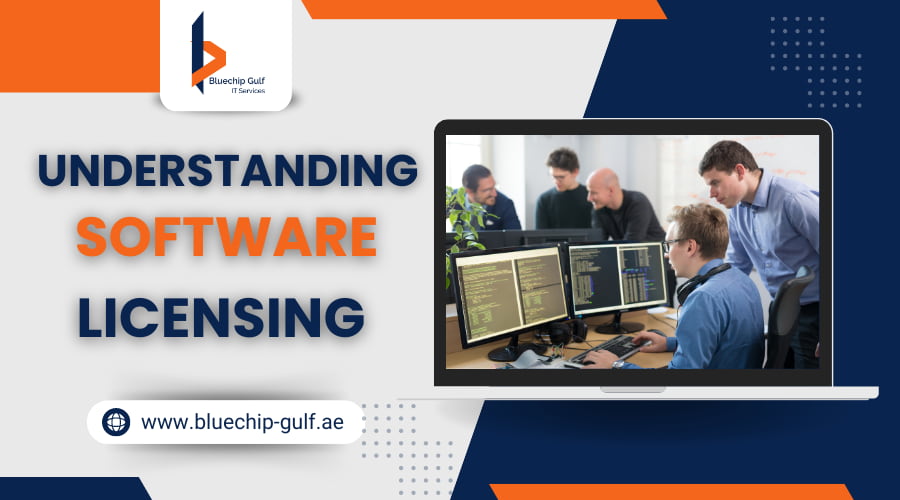
Understanding Software Licensing, While not the most glamorous subject, It stands as a crucial aspect that demands attention. Beyond the allure of your product lies the intricate web of legalities governing the terms and conditions surrounding its distribution and usage. Before diving into deployment, Understanding Software licensing is Paramount. So, let’s delve into the comprehensive realm of software, unraveling its significance and implications.
What is Software Licensing? Understanding Software Licensing
Software licensing refers to the legal agreement between the software creator or vendor and the end-user, outlining the terms and conditions under which the software can be used. This agreement grants users the right to use the software while establishing the limitations and restrictions imposed by the software creator. Licensing plays a crucial role in protecting intellectual property rights, managing distribution, and ensuring compliance with legal regulations.
It defines how users can access, install, and utilize the software. It encompasses various aspects such as the number of installations allowed, duration of use, potential restrictions on copying or modifying the software, and any associated support or maintenance services.
How Understanding Software Licensing Works ?
When using software for the first time, users usually have to accept an end-user license agreement (EULA). This legally binding agreement outlines the terms and conditions that control users’ rights when using the software. The EULA comprises an array of definitions and clarifications, addressing key factors such as the permissible duration of use, pricing details, distribution rights, expected support, and various other pertinent considerations. It serves as a contractual framework, ensuring that both software developers and end-users understand their respective obligations and entitlements.
Licensing agreements are frequently extensive, and chances are you’ve encountered numerous instances where, in a hurry, you scrolled through the terms, clicking the agreement box without
delving into the details. However, it’s strongly advisable to invest the time in reading the agreement thoroughly, as doing so is in your best interest.
Types of Software Licensing Models
1. Perpetual Licensing
Perpetual Licensing is the most conventional licensing model. In this model, the client buys software once and maintains it forever. Customers usually make payment in advance for the license and sometimes pay annually the cost of maintenance. One benefit of this license is that customers understand the precise amount they have to pay, unlike when they subscribe to a service. After buying a perpetual license, customers usually host the software on their services.
2. Concurrent Licensing
If you are an owner of a business, you have to seek a Understanding software licensing model that will permit you to buy several licenses for your workers effortlessly. Concurrent Licensing permits companies to buy hefty amounts of licenses without wasting useful cash or time. Concurrent licensing allows several users on one licensing code, permitting corporations to handle their software licenses effortlessly.
3. Subscription-based Licensing
Subscription-based licensing has evolved as one of the very renowned kinds of software licenses, particularly in today’s customer market. A number of corporations utilize this Understanding software licensing model with high triumph. Customer pleasure is specifically high with this model because customers already understand and convenience of this model. The subscription-based kind of licensing contract permits for self-service attributes which increase customer faith and pleasure. In addition, customers relish understanding the precise details of when they will be cost for utilization.
4. Proprietary Licensing
Most kinds of Licensing systems now are proprietary licenses. These licenses permit customers to buy the appropriate to utilize software through a license, while the software publisher holds complete ownership of the software. When a customer buys software with a proprietary licensing system, the person or corporation will need to agree with the conditions, as the software stays the asset of the provider.
5. Floating Feature Licensing
Floating feature licensing permits a customer to buy several licenses while restricting the usage of specific features among users at the same time. This Understanding software licensing model permits corporations to be adaptable in the usage and option of features, and hence undoubtedly save money.
6. Network Licensing
Network licensing becomes imperative in scenarios where users require software access without consistent internet connectivity. This presents challenges in managing feature accessibility, monitoring license utilization, and more. In such instances, the optimal software licensing model is network licensing. Sentinel offers licensing solutions that enable continuous monitoring of usage, even in the absence of internet access, ensuring seamless control and oversight.
7. Cloud-based Licensing
Embracing a user-centric approach, cloud-based licensing provides the flexibility of access anytime, anywhere. Although various software license models can be adapted to a cloud environment, subscription licenses stand out as the most prevalent. Optimal results are achieved when transitioning from an existing on-site licensing platform or establishing a new system.
Why Does Understanding Software Licensing Matter?
For a number of reasons, It is extremely important and influences how software is developed, distributed, and used. Here are key reasons:
1. Legal Compliance
Software licenses serve as legally binding agreements that define the terms and conditions of use. Adhering to these agreements ensures legal compliance, helping both software developers and users avoid legal disputes.
2. Intellectual Property Protection
Software developers’ intellectual property is protected by licensing, which limits the use, duplication, and modification of their creations. It keeps the value of the creator’s work intact by preventing unauthorized duplication or distribution.
3. Revenue Generation
For software developers, licensing is a crucial mechanism for revenue generation. By establishing different licensing models, such as subscription or per-user licensing, developers can monetize their products and sustain ongoing development efforts.
4. User Entitlements and Restrictions
Software licenses delineate the entitlements and restrictions granted to users. This includes the duration of use, permitted installations, and any restrictions on altering or redistributing the software. Clear terms help manage user expectations.
5. Support and Updates
Many software licenses include provisions for support services and updates. Users are informed about the level of assistance they can expect and whether they are entitled to receive software updates, patches, or new features during the license period.
6. License Monitoring and Control
Software licenses enables developers to monitor and control the allocation and usage of their products. This includes tracking the number of installations, ensuring compliance with licensing terms, and implementing measures to prevent unauthorized usage.
7. Adaptation to Business Models
Different software licensing models, such as subscription-based or usage-based licensing, allow developers to adapt to evolving business models. In order to respond to market trends and demands, this flexibility is crucial.
8. Security and Compliance
Licensing plays a role in enhancing software security and compliance. Developers can implement licensing mechanisms to protect against piracy and unauthorized access, and ensure that users are using the software in accordance with legal standards.
9. Customization of Licensing Models
Software developers can tailor licensing models to suit their business approaches and target markets. This customization includes choosing between perpetual licenses, subscription models, or other innovative approaches that align with market demands.
10. Technological Advancements
With the evolution of technology, licensing models have also adapted. Cloud-based licensing, for example, enables users to access software remotely, fostering greater flexibility and scalability.
Understanding Software licensing matters as it serves as the legal framework governing the relationship between software developers and users. It ensures fairness, protects intellectual property, generates revenue, and facilitates a structured and secure environment for the software ecosystem to thrive.

